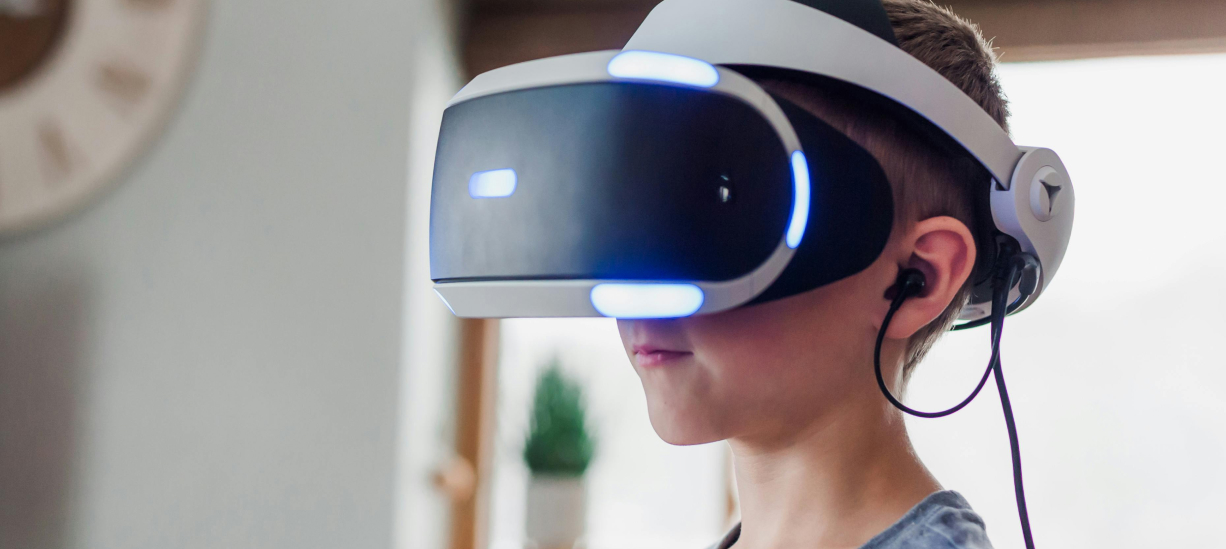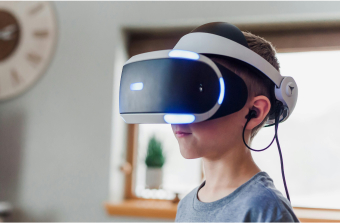

Virtual Reality (VR) and Augmented Reality (AR) have emerged as transformative technologies with the potential to revolutionize how we interact with digital content and experience the world around us. From immersive gaming experiences and virtual travel adventures to practical applications in education, healthcare, and beyond, VR and AR are opening up new possibilities for entertainment, communication, and problem-solving. In this blog post, we’ll delve into the exciting potential of VR and AR technologies, uncovering their diverse applications and the impact they’re poised to have on our lives.
VR and AR have transformed the gaming industry, offering players unprecedented levels of immersion and interactivity. With VR headsets like the Oculus Rift, HTC Vive, and PlayStation VR, gamers can step into virtual worlds, explore fantastical landscapes, and engage in thrilling adventures like never before. AR gaming experiences, such as Pokémon GO, blend virtual elements with the real world, allowing players to interact with digital characters and objects overlaid onto their physical surroundings. As VR and AR technology continues to evolve, the boundaries between the virtual and real worlds in gaming are becoming increasingly blurred, creating new opportunities for creativity and innovation.
VR technology enables users to embark on virtual travel adventures and explore destinations around the globe from the comfort of their own homes. Whether it’s touring famous landmarks, exploring natural wonders, or diving into underwater ecosystems, VR travel experiences offer a tantalizing glimpse into places that may otherwise be inaccessible. Similarly, AR applications like Google Maps’ Live View feature use augmented reality overlays to provide real-time navigation and information about local points of interest, enhancing the travel experience for users navigating unfamiliar environments.
VR and AR have the potential to revolutionize education and training by creating immersive learning environments that engage students and facilitate experiential learning. In virtual classrooms, students can participate in interactive lessons, conduct virtual experiments, and collaborate with peers in ways that transcend traditional teaching methods. Similarly, VR and AR simulations are used in professional training programs across various industries, from healthcare and aviation to manufacturing and military training, providing hands-on experience in safe and controlled environments.


In the field of healthcare, VR and AR technologies are being leveraged for a wide range of applications, including medical training, patient education, and therapeutic interventions. VR simulations enable medical students to practice surgical procedures and diagnostic techniques in realistic virtual environments, while AR-assisted surgeries provide surgeons with real-time visual guidance and information during complex procedures. Additionally, VR therapy is emerging as a promising treatment modality for conditions such as post-traumatic stress disorder (PTSD), anxiety disorders, and chronic pain, offering patients immersive experiences that promote relaxation, distraction, and emotional regulation.
Businesses and industries are increasingly adopting VR and AR technologies for a variety of enterprise applications, including product design and visualization, remote collaboration, and customer engagement. VR design tools allow architects, engineers, and product designers to create and iterate on designs in immersive 3D environments, while AR-assisted maintenance and repair solutions provide field technicians with real-time instructions and information overlayed onto physical equipment. In the retail sector, AR shopping experiences enable customers to visualize products in their own homes before making purchasing decisions, enhancing the online shopping experience and reducing returns.
As virtual reality and augmented reality technologies continue to evolve and mature, their potential to transform industries, enhance experiences, and improve lives is becoming increasingly evident. From immersive gaming experiences and virtual travel adventures to practical applications in education, healthcare, and enterprise, VR and AR are reshaping how we interact with digital content and the world around us. As we embark on this journey into immersive realities, it’s essential to recognize the opportunities and challenges that lie ahead and to continue exploring the vast potential of these transformative technologies. With creativity, innovation, and collaboration, we can unlock new possibilities and harness the power of VR and AR to create a more immersive, interconnected, and enriched future for all.